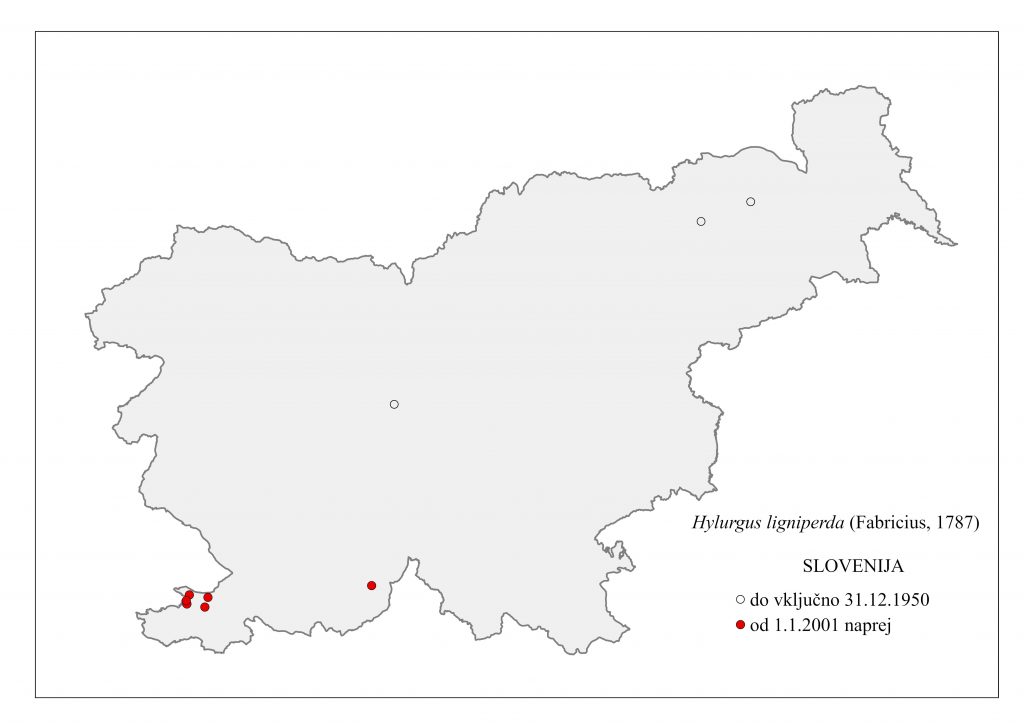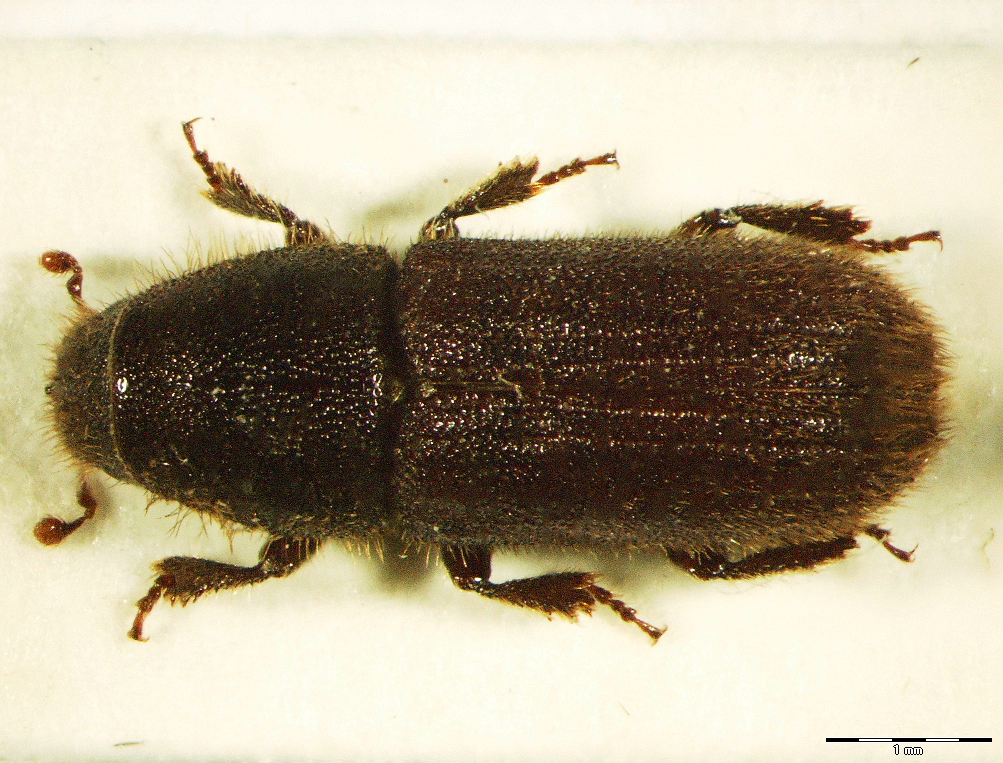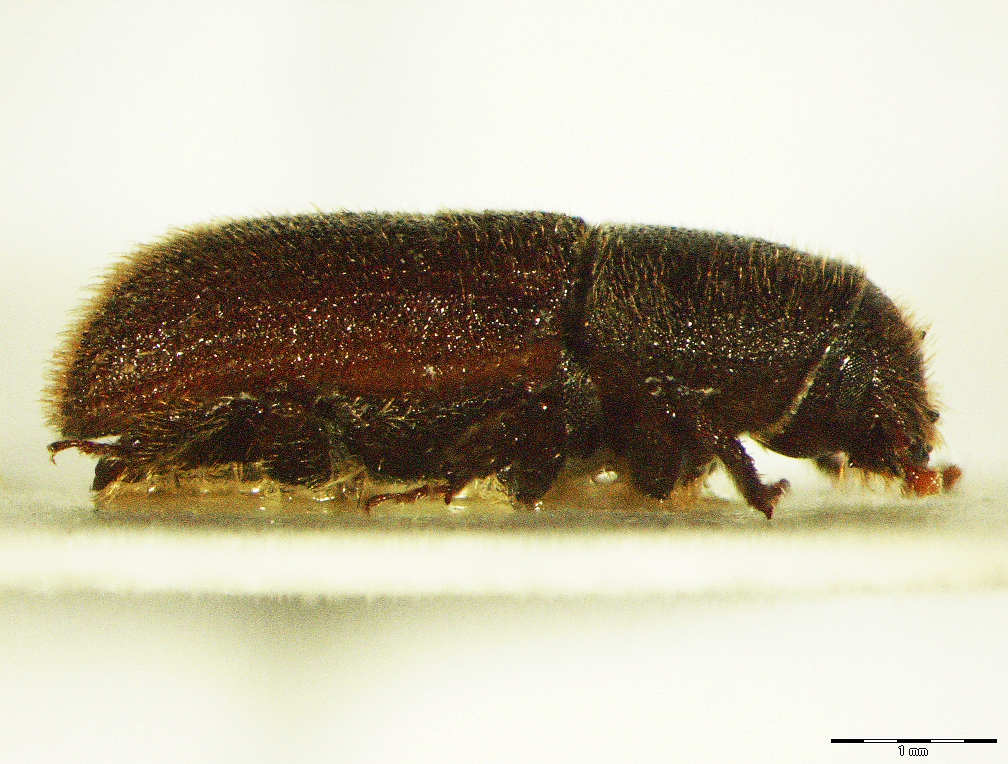08.01. Hylurgus ligniperda (Fabricius, 1787)
Presence
E: AU AZ BE BH BU BY CR CT CZ DE EN FI FR GE GR HU IT LA LT MC MD NL NR NT PL PT RO SK SL SP ST SV SZ UK YU
N: AG CI MO MR TU
A: CY HEI JA TR WS
AFR
AUR
NAR
Figure 38: Hylurgus ligniperda, dorsal, lateral (Photo: Maja Jurc)
Older catalogs and keys – citations of name
Siegel 1866: Hylurgus ligniperda Fab.; Brancsik 1871: Hylurgus ligniperda Fabr.; Grüne 1979: Hylurgus ligniperda (Fabricius, 1792); Freude, Harde, Lohse 1981: Hylurgus ligniperda Fabricius; Pfeffer & Knížek 1993: H. ligniperda (Fabricius, 1787); Pfeffer 1995: H. ligniperda (Fabricius, 1787).

Figure 39: Hylurgus ligniperda, distribution map according to historical and recent data
Ecology and presence in Slovenia
It is distributed in southern and central Europe, the European part of Russia, North Africa, Asia, the Afrotropics, Australia and the Nearctic. Siegel (1866) states that the species was “rare in Carniola, in the pine forests”. The same opinion is also shared by Brancsik (1871), who found the species in Lenart in Slovenske Gorice. More recent research shows that the species is relatively common in the south-eastern part of Slovenia, especially in the Slovene part of Istria, where it was widely caught in traps. No new records have been made in other parts of Slovenia in the last 100 years (Figure 39). Hosts include Pinus spp. (P. nigra, P. sylvestris, P. strobus, P. halepensis, P. pinaster. It has one to three generations per year. They hatch from April to May and July to August. The tunnel system is uniramous longitudinal, 10-16 cm long, excavated in the lower parts of trunks, in the root collar, in the thick surface roots of large trees and in fresh stumps. The larval gallery extend from the maternal gallery. Adult length is 5.0-5.5 mm (Figure 38). The species is secondary.



